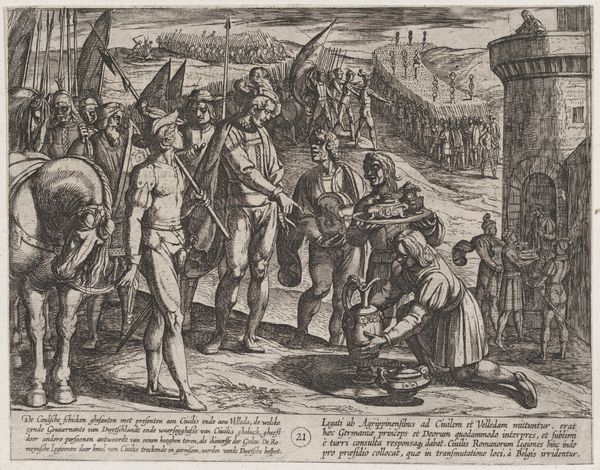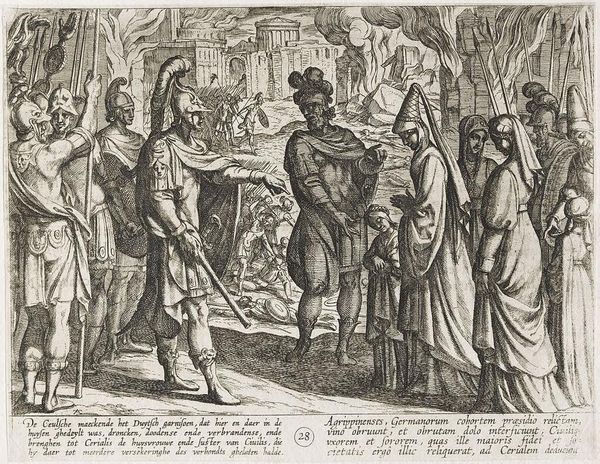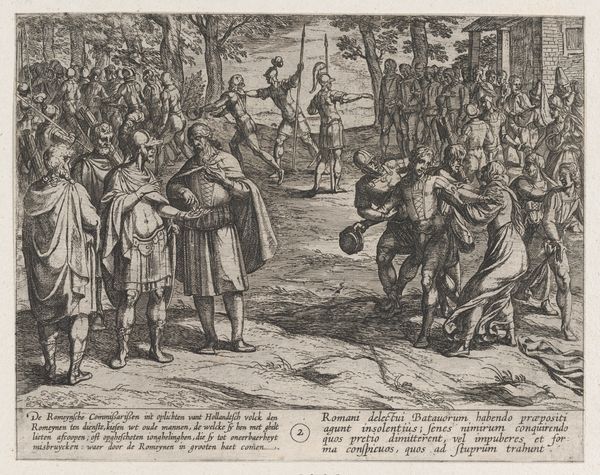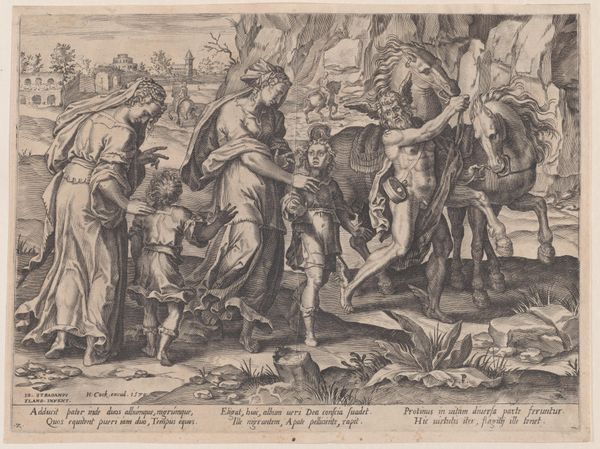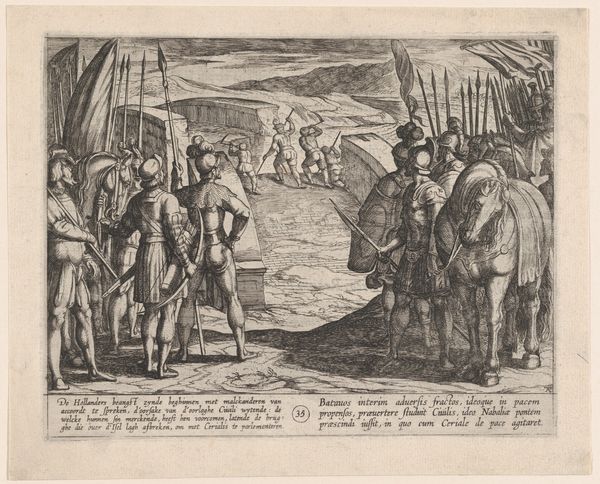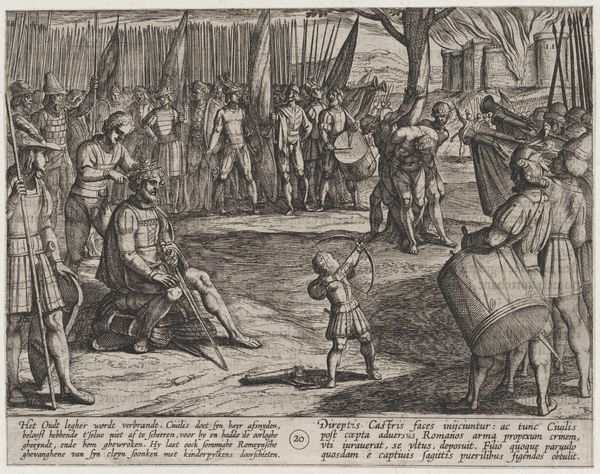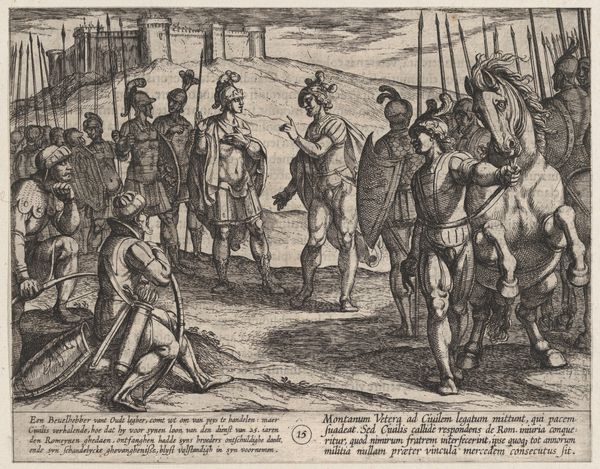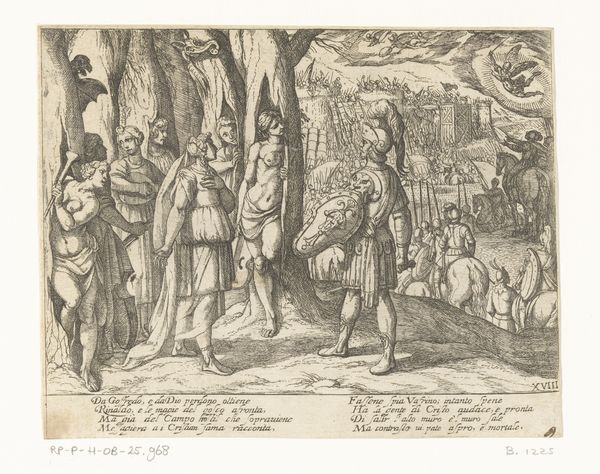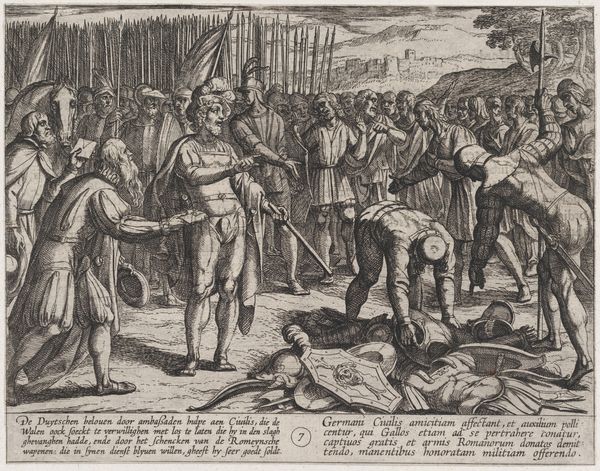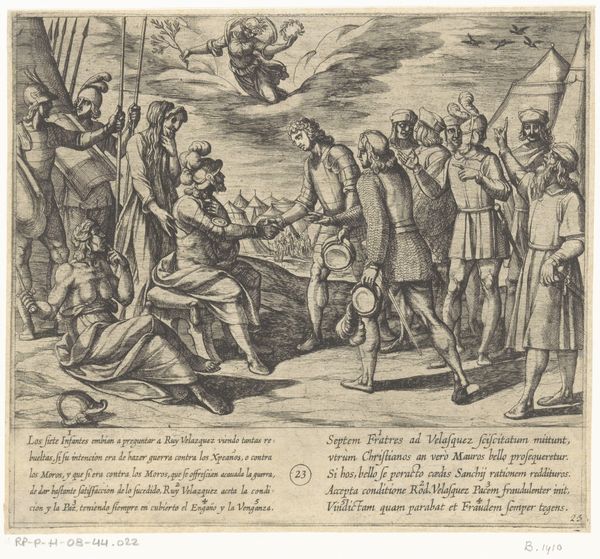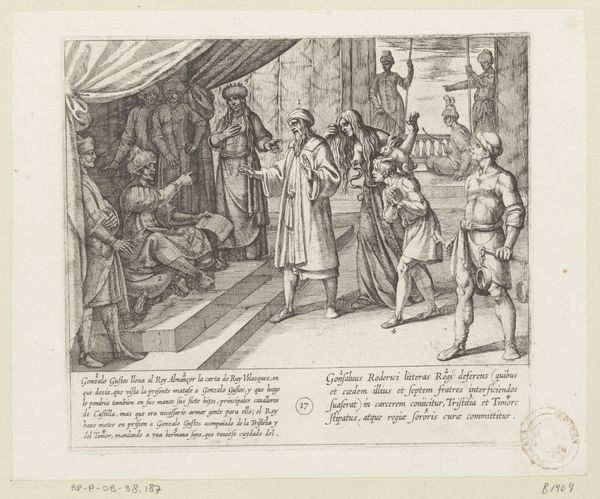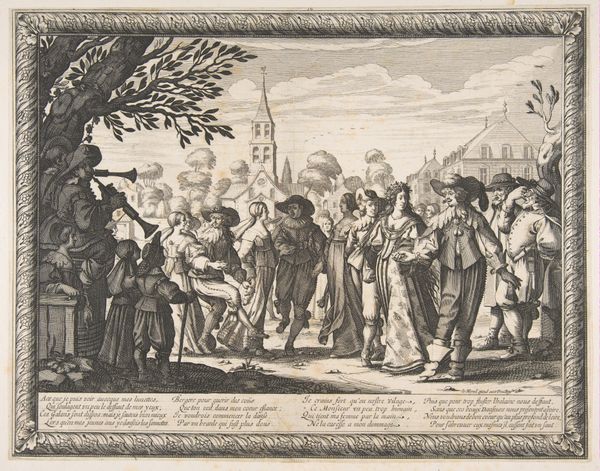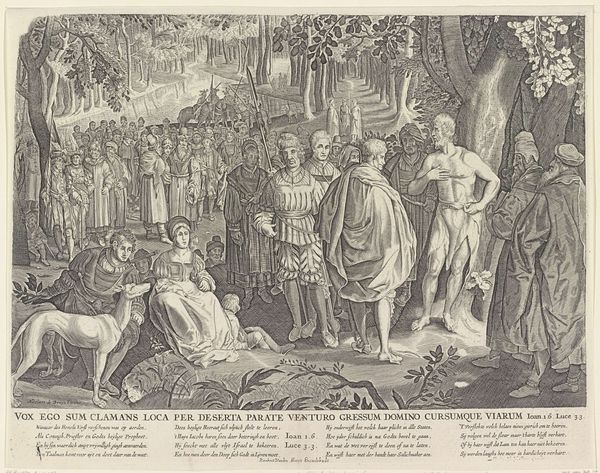
Plate 28: Cologne Troops Bring Civilis' Wife and Sister to Cerialis, from The War of the Romans Against the Batavians (Romanorvm et Batavorvm societas) 1611 - 1612
0:00
0:00
drawing, print, etching, ink, engraving
#
portrait
#
drawing
#
ink drawing
#
narrative-art
#
baroque
# print
#
etching
#
figuration
#
form
#
ink
#
soldier
#
ancient-mediterranean
#
men
#
line
#
history-painting
#
engraving
#
realism
Dimensions: Sheet: 6 3/8 × 8 1/8 in. (16.2 × 20.7 cm)
Copyright: Public Domain
Curator: Look at this teeming print by Antonio Tempesta, made way back in 1611 or so. It's called "Cologne Troops Bring Civilis' Wife and Sister to Cerialis." Can't you almost hear the clatter of their sandals? It feels like history brought to life. What do you see? Editor: Absolutely, that sense of drama is so Baroque! It is also a history painting which, I suppose, attempts to visually document past historical narratives or episodes. It's all done with etching and engraving, and ink - so monochromatic! I'm initially struck by the sheer chaos and, honestly, a little bit of pity for the women being presented. I mean, what’s the story behind their capture and forced submission? What purpose do they serve in this transaction? Curator: Precisely. I'd suggest that the print tells a story ripped from the annals of the Roman-Batavian war. We see, perhaps, a symbolic gesture – the women, high-ranking family members, are brought forth to seal a treaty. And, yes, one does wonder what their future will be? Imagine the weight of their capture. The scene teems with classical structures in the background turning to flames. Editor: So, it’s not just a depiction of war but almost a meditation on the sacrifices – particularly female sacrifices– that get made to end the conflict? Curator: Indeed! Antonio’s skill breathes such narrative into simple lines. Isn't it remarkable how an artist can evoke so much emotional weight? Consider that the line that Tempesta walks is one which makes it not overtly a history painting that purely romanticises conflict and colonialism; instead, it captures a feeling – a tension. What will come of all of this? Editor: That gives me a lot to think about, especially how artists use these old stories to communicate new ideas about gender, colonialism, and power. Curator: Exactly! It is like peeking into the mind of the artist reflecting on power. Seeing him grappling with themes of war, relationships, and conquest, four centuries on, really shows us how compelling storytelling really is.
Comments
No comments
Be the first to comment and join the conversation on the ultimate creative platform.
